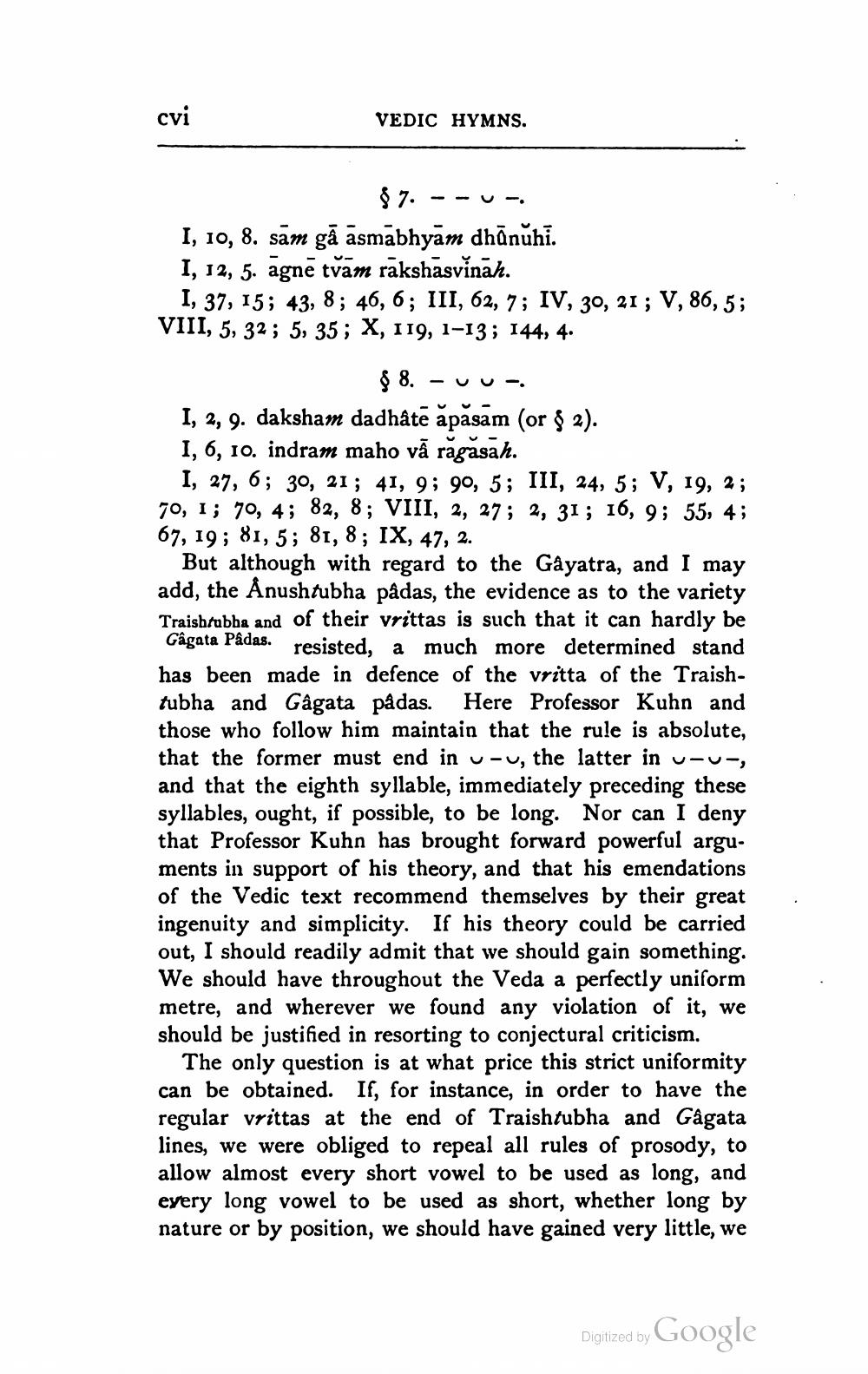________________
cvi
VEDIC HYMNS.
$ 7. --Use I, 10, 8. sam gā asmabhyam dhānuhi. 1, 12, 5. agnē tvām rakshasvinah.
I, 37, 15; 43, 8; 46, 6; III, 62, 7; IV, 30, 21; V, 86,5; VIII, 5, 32 ; 5, 35; X, 119, 1-13; 144, 4.
$ 8. -UU1, 2, 9. daksham dadhâte apasam (or & 2). 1, 6, 10. indram maho vā rägasah.
I, 27, 6; 30, 21; 41, 9; 90, 5; III, 24, 5; V, 19, 2; 70, 1; 70, 4; 82, 8; VIII, 2, 27; 2, 31; 16, 9; 55, 4; 67, 19; 81, 5; 81, 8; IX, 47, 2.
But although with regard to the Gayatra, and I may add, the Anushtubha pâdas, the evidence as to the variety Traishtubba and of their vrittas is such that it can hardly be
Gâgata Padas. resisted, a much more determined stand has been made in defence of the vritta of the Traishtubha and Gâgata pâdas. Here Professor Kuhn and those who follow him maintain that the rule is absolute, that the former must end in u-u, the latter in u-u-, and that the eighth syllable, immediately preceding these syllables, ought, if possible, to be long. Nor can I deny that Professor Kuhn has brought forward powerful arguments in support of his theory, and that his emendations of the Vedic text recommend themselves by their great ingenuity and simplicity. If his theory could be carried out, I should readily admit that we should gain something. We should have throughout the Veda a perfectly uniform metre, and wherever we found any violation of it, we should be justified in resorting to conjectural criticism.
The only question is at what price this strict uniformity can be obtained. If, for instance, in order to have the regular vrittas at the end of Traishtubha and Gågata lines, we were obliged to repeal all rules of prosody, to allow almost every short vowel to be used as long, and every long vowel to be used as short, whether long by nature or by position, we should have gained very little, we
Digized by Google




